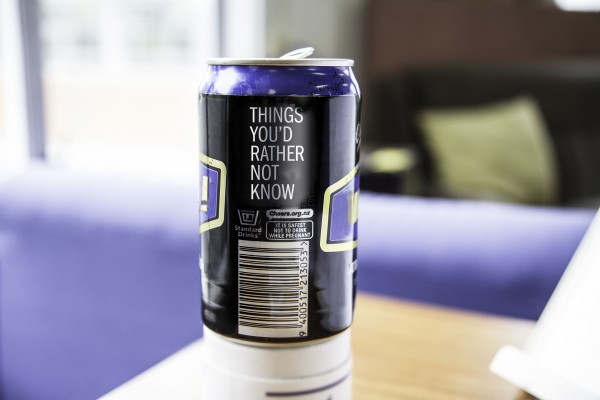A number of major players in the New Zealand beer industry have made the voluntary step to start featuring nutritional information labels on their beverages. Both Lion Nathan and DB Breweries, the two largest producers in the country, have got on board, and from this week onwards the labels will be featured on Speight’s, Tui, Mac’s, Heineken, DB Draught, Monteiths, Steinlager and Waikato Draught.
Unlike almost all other food products, alcohol is not required to print nutritional information under the Australia New Zealand Food Standards code. According to a spokesperson for FSANZ, alcohol is exempt because most alcoholic beverages have minor nutritional significance—except for their energy and alcohol content.
For many drinkers it is the energy content that is the most relevant consideration. Alcohol is very high in empty calories (about 90cal per standard drink for straight spirits), and that this fact is not prominently featured leads to uninformed consumers who underestimate their caloric intake. The absurdity of this is that while soft drinks are required to comply by the standard the exact same product with a shot of vodka in it receives an exemption.
Elaine Rush, Professor of Nutrition at AUT commended the beer industry’s move, calling it “Good news,” and saying, “Consumers should be informed. Alcohol can contribute a considerable proportion of energy to the daily diet—up to 20 percent—and more with binge drinking. Often these ‘calories’ are ignored or under reported in surveys. Alcoholic drinks are part of our food patterns and should be labelled the same way to inform consumers.”
Students often bemoan the restrictive regulations placed on their drinking habits, but increasing consumer information would be one way to help people make better choices and reduce binge drinking in a positive and non-restrictive manner. When a box of Cruisers is forced to reveal it contains more than an entire day’s recommended intake of calories, many may choose to think twice about their drinking habits.
The beer industry’s move to encourage labelling may begin a movement to change the code to include wine and RTD products. There was previously a consideration in 2006 to further adapt the code to require nutritional information for RTDs, but the proposal was eventually dropped. While both the Australian Consumers’ Association and New Zealand Food Safety were supportive of the initiative, it was opposed by several large producers.
The Distilled Spirits Association of New Zealand, an alcoholic lobbying group, claimed that they were “not aware of any instances where the public has been disadvantaged, misled or deceived from not reading nutritional information on product labels”.
A number of industry players raised concerns regarding costs to re-label products, and in 2009 the decision was put on hold, and eventually superseded, when a Ministerial Council ran a review of food labelling law and policy.
The Alcohol Policy Council, the NZ Nutrition Foundation and several other consumer advocacy organisations made submissions on the matter of nutritional information labelling. However, the amount of these were eventually watered down by submissions from industry lobbyists. The code was changed to require alcoholic products to include nutritional labelling—but only if the product made a specific nutritional claim, like low-carb or gluten free.



